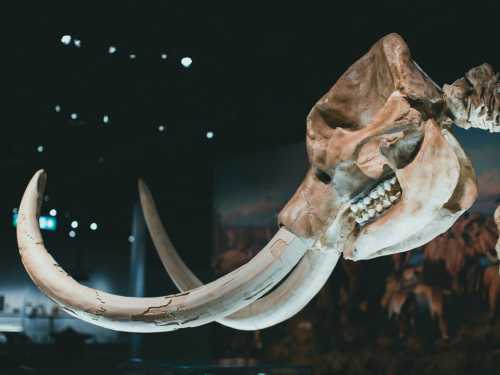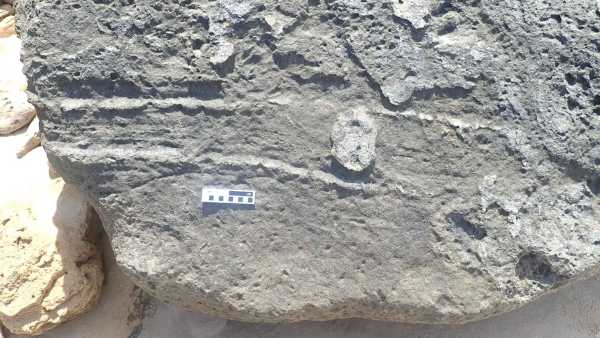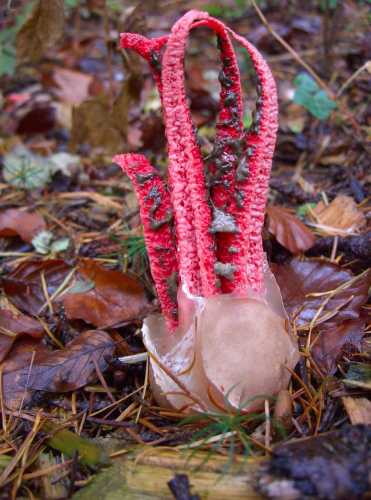
When we hear “mammoth hunters,” a picture from a school textbook immediately comes to mind, with a familiar illustration: a mammoth fell into a hunting pit, and hunters finish it off with spears and stones. But in fact, such hunting is an invention of modern man, because it is enough to recall that the times when people and mammoths lived side by side were the Ice Age and were accompanied by such a phenomenon as permafrost. Now imagine that you need to dig a hunting pit in permafrost, where an entire mammoth could fit – it will be difficult, even if you have an excavator, but in those days the most that was available was a digging stick.
Today I wanted to talk not about how our ancestors hunted such large prey. But did they hunt it at all? More precisely, was the hunting of mammoths such a massive phenomenon that many even believe that it caused the extinction of ancient elephants?
Of course, it is foolish to claim that mammoth hunting did not exist at all, especially since there are archaeological finds that confirm it. Yes, scientists have found bones of these animals with the tips of stone tools stuck in them, and rock paintings often depict such hunting. But perhaps this hunting was extremely rare, and with a high probability, not every person who lived in those days could boast of killing a mammoth. It's like now – we have many films and books on space themes, images of rockets and space are often found in popular culture, and there are even remains of spacecraft that archaeologists of the future will be able to dig up. However, we ourselves cannot be called a “Space Civilization”, because out of 7 billion people living on the planet, a little more than 500 have been in space.
So, ancient people probably shouldn't be called “Mammoth Hunters,” and now let's figure out why!
And first of all, you need to understand that in those distant times, mammoths were not the only animals that people could hunt. Among the fauna surrounding mammoths, scientists count more than 70 species of large mammals, and many of them were the object of hunting for ancient man, and these are primarily ungulates – deer, horses, elk, bison, yaks, musk oxen, saigas. And hunting them is much easier, safer and more efficient. When your existence and the existence of your tribe depend on hunting, it was important not only to get an animal, but also to try to spend less effort on it. It is much easier to get a yak or musk ox than a mammoth. Accordingly, you should not consider a mammoth as the main object of hunting, because such hunting is too complicated. After all, it's possible to kill a horse or deer with a stone-tipped spear, but to pierce 2-3 cm of a mammoth's skin with it, and then also the subcutaneous layer of fat, is somehow unlikely.
Why do we need to hunt a mammoth at all? The answer seems obvious, we eat the meat, build a house from the bones, sew clothes from the skin and cover the hut with it. But let's figure it out.
They ate the meat!
I will not write about the edibility or inedibility of its meat, that is not the point. But the fact that a tribe of 30 people (a standard tribe of that era) would have to eat an animal weighing 15 tons, even if it had half the meat in it, for a very long time. Well, that is, 30 people would eat 7 tons of meat for 233 days, provided that each of them would eat a kilogram of mammoth every day. However, the question of storage arises, because the meat will not lie for 233 days and wait for it to be eaten, even if we imagine that the ancients dug pits-refrigerators in the permafrost, where they stored mammoth meat. The obvious question becomes – how to dig such a pit (probably no easier than a hunting pit)? How to bring 7 tons of meat there, because the mammoth was not obtained next to the pit? In general, it turns out that even though a mammoth is big, it won't be possible to eat it for almost a year, it will spoil. And then the question is – why take the risk and go hunting for it, wasting your energy, when it's easier to get one horse every two weeks?
Although digging a giant cold storage pit was unrealistic, ancient people knew other methods of preservation. Ethnographic parallels with Arctic peoples (Inuit, Chukchi) show that meat could be preserved by immersing it in icy streams or lakes, where low temperatures and lack of oxygen slowed decomposition. In addition, drying and smoking were key methods. The meat was cut into thin strips and dried in the wind or over a fire. In this way, it was possible to create a strategic supply of light, nutritious food, which was indispensable during migrations or periods of famine. However, even these methods required enormous labor costs to process such a gigantic carcass.
Anyone who has ever tried to make their own meat preparations for the winter, even from a single animal, understands how laborious this process is. Now imagine that your “animal” weighs as much as an African elephant, and the only tools you have are a flint knife.
And they built a house out of bones!
And yes, there are dwellings made of mammoth bones, but were they built from captured animals? Scientists have calculated that one such house can contain the remains of more than 30 animals. Well, for the sake of a 20 sq. m. hut, you need to kill, cut up and eat 30 mammoths!!! By the way, for a standard tribe of 30 people, this would take 6700 days or 19 years (this is more of a statistical joke). Most likely, dwellings made of mammoth bones were built not from killed animals, but from found remains. Just as you can find whale bones somewhere on the coast now, it was not difficult to find mammoth bones and tusks back then, there were probably a lot of them lying around, if they are still found. And collecting old bones and building a house from them is easier than getting such a pile of mammoths. And besides, using old bones is much more pleasant, because inevitably there will be pieces of flesh on the eaten remains, it will all rot, stink, attract predators and insects, and living in such conditions is extremely difficult, if at all possible.
We will use the skins for clothing and shelter.
The thickness of a mammoth's skin is 2-3 cm, its total weight can be more than 200 kg, it is difficult to manipulate it. In the cold it quickly tans and turns into “plywood”, in the summer it dries out and becomes “plywood” again. Of course, it is possible to process such skin, but it will take too much effort, it is much easier to cope with a dozen deer skins – and it is convenient to work with, and it is easier to get, and the clothes made from it are much better (although you can argue here, but this is already a matter of taste and fashion).
However, this does not mean that mammoth skins were not used at all. Their strength and toughness made them an ideal material for other purposes. Just as the peoples of the North used thick walrus skin to cover boats (kayaks, umiaks) or to build dwellings, Paleolithic people could use mammoth skins as roofing material for their bone dwellings, as strong windbreaks, or as durable flooring. Its “plywood” toughness was an advantage, not a disadvantage, in this case.
In summary, it turns out that ancient people were not particularly motivated to hunt mammoths, there were many other more accessible prey around. Yes, of course, mammoths were hunted, but most likely it was a rare phenomenon. Those who got a mammoth probably enjoyed great honor and respect, told about them to children and drew their feat in caves. In general, everything is like with our astronauts.





